Greenhouse Spring Starts Group
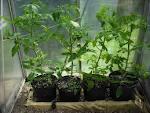 Starts Group: Get a jump on the growing season ! Learn what to start and when as well as how to make great potting mixes. Planning meeting Sun. Feb 26, 11 am @ the greenhouse.
Starts Group: Get a jump on the growing season ! Learn what to start and when as well as how to make great potting mixes. Planning meeting Sun. Feb 26, 11 am @ the greenhouse.
First plantings Sunday, March 4 @ 11 am
By Alison Colwell|2018-05-04T19:47:25-07:00February 4th, 2012|Categories: Food Program, Growing (Garlic Co-op, Greenhouse, Gleaning Project)|0 Comments
 Starts Group: Get a jump on the growing season ! Learn what to start and when as well as how to make great potting mixes. Planning meeting Sun. Feb 26, 11 am @ the greenhouse.
Starts Group: Get a jump on the growing season ! Learn what to start and when as well as how to make great potting mixes. Planning meeting Sun. Feb 26, 11 am @ the greenhouse.
First plantings Sunday, March 4 @ 11 am
By Alison Colwell|2018-05-04T19:41:26-07:00January 4th, 2012|Categories: Food Program, Nettlefest|0 Comments
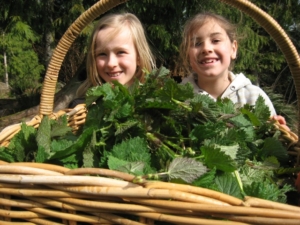 This years Nettlefest will be happening on March 17th at 5:30pm at the South Community Hall.
This years Nettlefest will be happening on March 17th at 5:30pm at the South Community Hall.
Nettle Picking starts at 11am. Meet at the Community Hall with baskets, clippers and GLOVES to Carpool to the picking spot.
Kitchen starts at 11:30am at the hall. Volunteers will be making Nettle Bread and soup together.
Nettle Vendors are welcome to set up a table in the hall during the day. Contact us if you’re interested.
Potluck Dinner starts at 5:30pm.
This year we will be having two competitions:
The first: The Best Nettle Dish: Bring your favourite nettle dish. No restrictions on type. A panel of judges will choose their favourite.
The second competition: The Best Nettle Product: Serious or funny – your choice! All entrants will get a chance to “pitch” their product. Winners determined by the audience applause!
Come sing your nettle song or read your spring poem !
Come get involved in this annual Galiano celebration of Spring!!!
By Alison Colwell|2018-05-04T19:36:39-07:00January 4th, 2012|Categories: Food Program|0 Comments
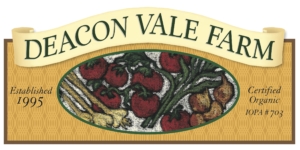 Googling ‘eating local’ offers up 2 million responses today whereas 25 years ago…. wait a minute, there was no google then ! My point is is that we have, en masse, embraced the benefits of eating locally as our awareness around almost everything we do expands. This article is devoted to better laying out our options for eating close to home. At the beginning of the spectrum of possible geographic food sources is the wild food we forage from our own ‘yard’: nettles, chickweed, pepper grass (all available this lovely January day). Next are the treats we alter habitat to grow in our gardens from asparagus to zucchini and even in January we can have kale, leeks, carrots and a wide assortment of greens. Beside that are the fish, deer, seaweed, blackberries and mushrooms that we might travel a bit on island to harvest. Following this there is the Saturday Market where we can take advantage of the land and skills that our Galiano farmers bring together to share produce with the community. We might think that LOCAL stops there but the spectrum is long and when we begin to look over the waters we see the other neighbouring lands and very importantly Vancouver Island.
Googling ‘eating local’ offers up 2 million responses today whereas 25 years ago…. wait a minute, there was no google then ! My point is is that we have, en masse, embraced the benefits of eating locally as our awareness around almost everything we do expands. This article is devoted to better laying out our options for eating close to home. At the beginning of the spectrum of possible geographic food sources is the wild food we forage from our own ‘yard’: nettles, chickweed, pepper grass (all available this lovely January day). Next are the treats we alter habitat to grow in our gardens from asparagus to zucchini and even in January we can have kale, leeks, carrots and a wide assortment of greens. Beside that are the fish, deer, seaweed, blackberries and mushrooms that we might travel a bit on island to harvest. Following this there is the Saturday Market where we can take advantage of the land and skills that our Galiano farmers bring together to share produce with the community. We might think that LOCAL stops there but the spectrum is long and when we begin to look over the waters we see the other neighbouring lands and very importantly Vancouver Island.
We are omnivores in this house and though we eat much less meat and fish than my parents did we relish every chicken or venison roast that comes our way. I am often acquiring my meat from the farms that are practicing animal husbandry off our shores. Our neighbouring islands boast countless small to medium-sized farms where dairy, meat and grand displays of fruit and vegetables are for sale and though the price may be slightly higher we all know that the cost to workers, the land and the environment is much lower. Having these realities as priorities in our lives will help shape the global food marketplace.
Every time we buy something we are voting for it.
Widening the circle of our ‘local’ means not expecting to grow or produce everything here on Galiano, at least not right away, it can be that we expand our range to include our ‘neighbours’ some of whom never lost their farming practices and communities and those that did have been steadily rebuilding like us. We are lucky to have excellent stores on Galiano that pride themselves on sourcing regional food. There is also a comprehensive guide: FARMFRESH put out annually that point us to 70 different farms right here in this region. Check out their 25th edition at islandfarmfresh.com or pick up a paper copy.
We can be hard on ourselves and each other for not doing what we know we should do. Ultimately this attitude lacks compassion for ourselves and others. So in transitioning to healthier choices for ourselves and the rest of Earth’s creatures, let’s accept that we are each moving at the pace possible at this time. Of course it feels like the fire is underfoot too so we want to stay awake and keep our good intentions in front of us and in focus. We can help each other do that with joy and love. Come share your ideas, skills and enthusiasm for food at any or all Food Program projects and events. Together we grow.
By Alison Colwell|2018-05-04T19:33:39-07:00January 4th, 2012|Categories: Food Program, Growing (Garlic Co-op, Greenhouse, Gleaning Project)|0 Comments
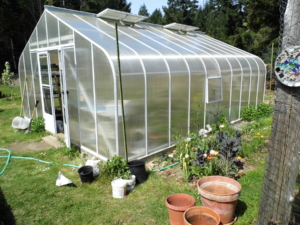 Due to bad weather, the meeting will be postponed one week. We will now be meeting on the 26th.
Due to bad weather, the meeting will be postponed one week. We will now be meeting on the 26th.
Believe it or not we will have our first greenhouse gathering this month to begin planning what to grow and to order seeds. The fact that we can begin the process so early in the new year is a glorious aspect of our west coast climate.
We will meet Thurs. Jan 26 at 1 pm at the Activity Centre meeting room to plan this year’s permanent plantings while the Starts Group, where people come to simply use the bright warm greenhouse facility to seed starts for their home gardens, will meet in February; date to be announced.
If you would like to be participate in the Galiano Community Food Program’s Community Greenhouse this year – be sure to come to the meeting.
By Alison Colwell|2018-05-04T19:30:09-07:00January 4th, 2012|Categories: Food Program, Workshops|0 Comments
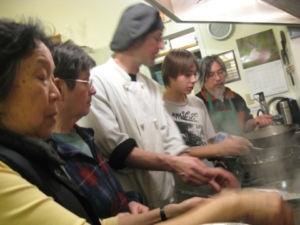 We have an upcoming Community Kitchen on Feb 13th at 5:30pm
We have an upcoming Community Kitchen on Feb 13th at 5:30pm
Thai Inspired Community Kitchen led by Orion Finnie, chef at La Boheme Restaurant.
We’ll be making Thai Pumpkin Soup, Phad Thai ,Thailand’s famous rice noodle dish and Honey Bananas for desert.
Please bring containers to take home food, and a $15 to $20 contribution.
Please RSVP – we are limited to ten people.
Update: This kitchen is now full, but I will be keeping a waiting list, in case of drop outs.
By Alison Colwell|2018-05-04T19:26:00-07:00January 4th, 2012|Categories: Food Program, Workshops|0 Comments
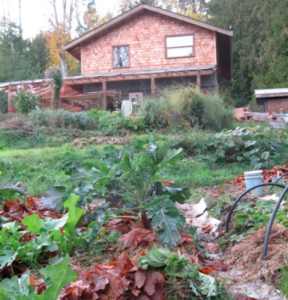 After taking the 10 month course with Linda Gilkeson last year I can finally point to some successes in having a mature winter garden. This growing space has only been in use for 3 years so it isn’t a real show piece but if anyone is interested in seeing the potential c’mon to 2330 Georgeson Bay Rd for a garden tour and tea Thursday, February 2nd at 1 pm. Please RSVP if you can come.
After taking the 10 month course with Linda Gilkeson last year I can finally point to some successes in having a mature winter garden. This growing space has only been in use for 3 years so it isn’t a real show piece but if anyone is interested in seeing the potential c’mon to 2330 Georgeson Bay Rd for a garden tour and tea Thursday, February 2nd at 1 pm. Please RSVP if you can come.
By Alison Colwell|2018-05-04T19:20:07-07:00January 4th, 2012|Categories: Food Program, Workshops|0 Comments
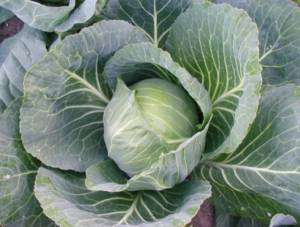 We have an upcoming Community Kitchen on January 16th at 5:30pm
We have an upcoming Community Kitchen on January 16th at 5:30pm
– Making Friends with Winter Vegetables –
Come join your community, and cook, eat and share food together.
We’re going to make Traditional Borscht, Cabbage Rolls, and Two different kinds of Slaw.
Please bring containers to take home (2L) soup and slaw, and a $15 to $20 contribution.
RSVP to Alison at galianofoodprograms@gmail.com Space is limited to 10 people.
By Alison Colwell|2018-05-04T17:04:53-07:00December 4th, 2011|Categories: Food Program, Growing (Garlic Co-op, Greenhouse, Gleaning Project)|0 Comments
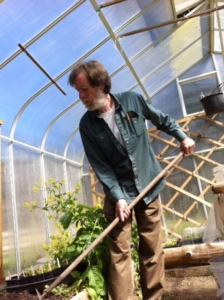 The harvest is my favourite time of year and so are the spring sowings and the summer warmth when the greens are growing so fast. And then its winter! Mild winters might be what we pray for and we are fortunate to live in a climate that allows outdoor work any month of the year so for this article I will share with you my joys of the winter season. Apart from drawing up garden plans to make next year the best yet and drooling over seed catalogs there are many garden tasks that keep me active and upbeat. To get a jump on spring plantings I have already gathered material for making potting mixes. The garden has been dug over and mulched and my compost is perking slowly with all the remaining weeds from the garden. The heap shouldn’t be ignored for long periods because they could be a warm home for rats and mice.
The harvest is my favourite time of year and so are the spring sowings and the summer warmth when the greens are growing so fast. And then its winter! Mild winters might be what we pray for and we are fortunate to live in a climate that allows outdoor work any month of the year so for this article I will share with you my joys of the winter season. Apart from drawing up garden plans to make next year the best yet and drooling over seed catalogs there are many garden tasks that keep me active and upbeat. To get a jump on spring plantings I have already gathered material for making potting mixes. The garden has been dug over and mulched and my compost is perking slowly with all the remaining weeds from the garden. The heap shouldn’t be ignored for long periods because they could be a warm home for rats and mice.
We need a cold season to freeze out some of the worst pests. Climate change means a proliferation of nasty pests which are not dying over the winter months. For that reason I turn my compost heaps and remove clutter that would give shelter to slugs and bugs. A good freeze would decimate a bad slug population and likewise aphids that would otherwise be a problem. Traditionally the autumn fires served the purpose of clearing dead wood which can also harbour disease. Fire also has another benefit of releasing the nutrients in the ash for a soil improver. (Ash is also a good additive for clay and acidic soils.) Winter is when the excess livestock is culled to preserve food stocks. We fatten up, tell stories to comfort the children and celebrate the Solstice; the turning point of the year where it all starts over again
By Alison Colwell|2018-05-04T17:02:42-07:00December 4th, 2011|Categories: Community Meals, Food Program|0 Comments
 The next soup making kitchen is scheduled for January 23rd at 11:30am at the South Hall.
The next soup making kitchen is scheduled for January 23rd at 11:30am at the South Hall.
When we have made the soup, we always stop, and sit down together before we begin clean up and packaging. This month, we would like to invite any seniors who would like to, to join us for lunch, just soup and bread, at about 1:30pm.
Cooks and enthusiastic participants needed!
Update: 14 volunteers made 74 containers of soup of three different varieties: Turkey Vegetable with Pasta, Caribbean Squash Soup and Hearty Lentil Soup.
By Alison Colwell|2018-05-10T14:23:08-07:00December 4th, 2011|Categories: Food Program|0 Comments
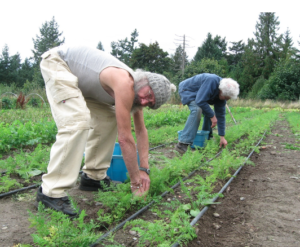 A few weeks ago I attended a “Beet and Cabbage” workshop. We made 3 different kinds of slaw, an amazing Borscht, cabbage rolls, beet cupcakes and more – But what stayed with me – more than all the great new recipes – was a lesson about the practicality and importance of choosing ingredients that are local, in season and that are suited for our climate, beets and cabbage, squash and carrots, for instance. They grow well in our climate most of the year.
A few weeks ago I attended a “Beet and Cabbage” workshop. We made 3 different kinds of slaw, an amazing Borscht, cabbage rolls, beet cupcakes and more – But what stayed with me – more than all the great new recipes – was a lesson about the practicality and importance of choosing ingredients that are local, in season and that are suited for our climate, beets and cabbage, squash and carrots, for instance. They grow well in our climate most of the year.
Tomatoes and peppers are summer vegetables here, and yet they are a constant on my family menu. When you shop at a grocery store in town – the shelves are full. You can pick any recipe you want before you shop, go to the store and find everything you need at any time of the year. But this is misleading. There are times of the year, say, at the end of August – when we have the opportunity to feast on our fresh, local abundance of tomatoes and peppers and put away as much as we can for the winter. Long-keeping varieties of tomatoes can be stored and eaten ‘fresh’ right into the early winter months. But as winter approaches I realize I needed to focus more on Squash and beets and the other crops still being harvested right now.
I once worked in a café where we came into work each morning, and checked what produce had been left for us in the cooler. It was that produce that dictated the menu for the day. It was a creative challenge, but taught me the lesson of using what you have. Learning to love and make do with whatever produce is locally in season can be challenging but rewarding. Talk to the local farmers, and the gardeners and use what’s readily available to inspire your creativity in the kitchen.
Malcolm has two favourite soups (and he’s tried a lot of soup!): Nettle Soup and Chanterelle Soup. Both are specific to a few weeks, or month each year. And I think that specialness is part of what makes them his favourites.
When we use food that is in season where we live, then there will be times when we won’t have certain ingredients. But that makes us love and appreciate them all the more when we do have them.
And in the meantime, I’ve discovered an unexpected love of cabbage!